Author: Jordan Folks
Brewer’s rely on a variety of methods to impart beer with increased levels of hop character, with one innovative approach being what’s referred to as dip hopping. Purportedly developed by brewers at Japan’s Spring Valley Brewery in 2012, dip hopping involves steeping hops in warm water or wort, in the fermenter, then transferring chilled wort into the fermenter to combine with the hop tea, and pitching yeast. Anecdotal reports from brewers using this method indicate it emphasizes fruity notes while suppressing less desirable characteristics, namely the grassiness from myrcene.
Given the novelty of this approach, not to mention Kirin’s apparent unwillingness to share much about their process, brewers are effectively building the dip hopping ship as they sail it. From hop amounts and whether to use water or wort to temperature and steeping duration, there are a number of variables that could have a perceptible impact, and only through multiple trials will we start to understand how best to use this technique.
I have an admitted obsession with hoppy beer and enjoy trying out any method that can lead to more pungent hop character. When I first heard about dip hopping, I thought it was another wacky homebrewing thing that I’d likely play around with at some point; then I learned it was developed by brewers at a large commercial brewery and was being used by American craft breweries I highly respect, which inspired me to design an xBmt so I could experience the impact for myself.
| PURPOSE |
To evaluate the differences between an American Pale Ale that was dip hopped and one that was not.
| METHODS |
For this first foray into dip hopping, I designed a simple American Pale Ale recipe I felt would help accentuate the impact of this method. Big thanks to F.H. Steinbart for hooking me up with the malt for this batch!
Dippin’ Hops
Recipe Details
| Batch Size | Boil Time | IBU | SRM | Est. OG | Est. FG | ABV |
|---|---|---|---|---|---|---|
| 5.5 gal | 60 min | 26.5 | 3.5 SRM | 1.047 | 1.013 | 4.46 % |
| Actuals | 1.047 | 1.013 | 4.46 % | |||
Fermentables
| Name | Amount | % |
|---|---|---|
| Pilsen | 7 lbs | 82.35 |
| Vienna Malt | 1 lbs | 11.76 |
| Carahell | 8 oz | 5.88 |
Hops
| Name | Amount | Time | Use | Form | Alpha % |
|---|---|---|---|---|---|
| Simcoe | 7 g | 60 min | Boil | Pellet | 10.4 |
| Centennial | 7 g | 25 min | Boil | Pellet | 8.9 |
| Centennial | 14 g | 10 min | Aroma | Pellet | 8.9 |
| Citra | 14 g | 10 min | Aroma | Pellet | 13.2 |
| Citra (Dip Hopped) | 28 g | 0 min | Aroma | Pellet | 13.2 |
Yeast
| Name | Lab | Attenuation | Temperature |
|---|---|---|---|
| Flagship (A07) | Imperial Yeast | 77% | 60.1°F - 72°F |
Notes
| Water Profile: Ca 58 | Mg 4 | Na 10 | SO4 87 | Cl 34 |
Download
| Download this recipe's BeerXML file |
After collecting the filtered water for a single 10 gallon/38 liter batch, I weighed out and milled the grain.
With the water properly heated, I incorporated the grains then checked to make sure the mash was at my target temperature.
During the mash rest, I prepared the kettle hop additions.
Once the mash was finished, I collected the wort and proceeded to boil it for 60 minutes, adding hops at the times listed in the recipe. When the boil was complete, I added 1 oz of Citra hops to a sanitized fermentation keg then transferred approximately 0.5 gallons/2 liters of hot wort to it.
A hydrometer measurement showed the wort was at my target OG.
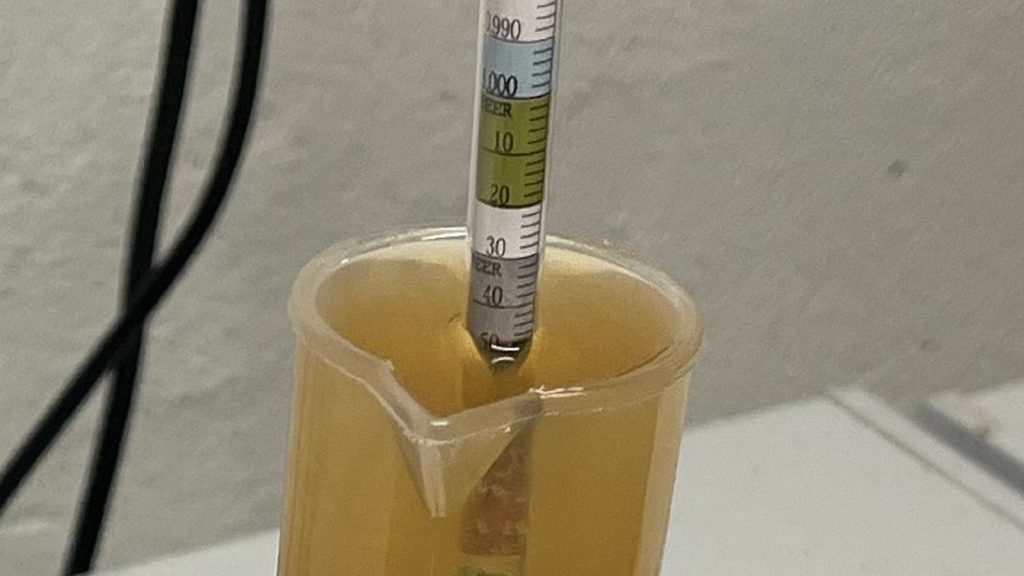
After a 5 minute steep, I ran the rest of the wort through my plate chiller, ensuring equal amounts ended up in each keg.
At this point, I pitched a single pouch of Imperial Yeast A07 Flagship into each batch.
The beers were placed in my chamber and left to ferment for 3 days at 64°F/18°C before I raised the temperature to 70°F/21°C. After another 3 days, fermentation activity was absent, so I took hydrometer measurements showing both had reached the same FG.

With fermentation complete, I cold-crashed the beers for 24 hours then proceeded to pressure transfer them to CO2 purged kegs. The filled kegs were placed in my keezer and burst carbonated overnight before I reduced the gas to serving pressure. After a week of conditioning, they were carbonated and ready for evaluation.
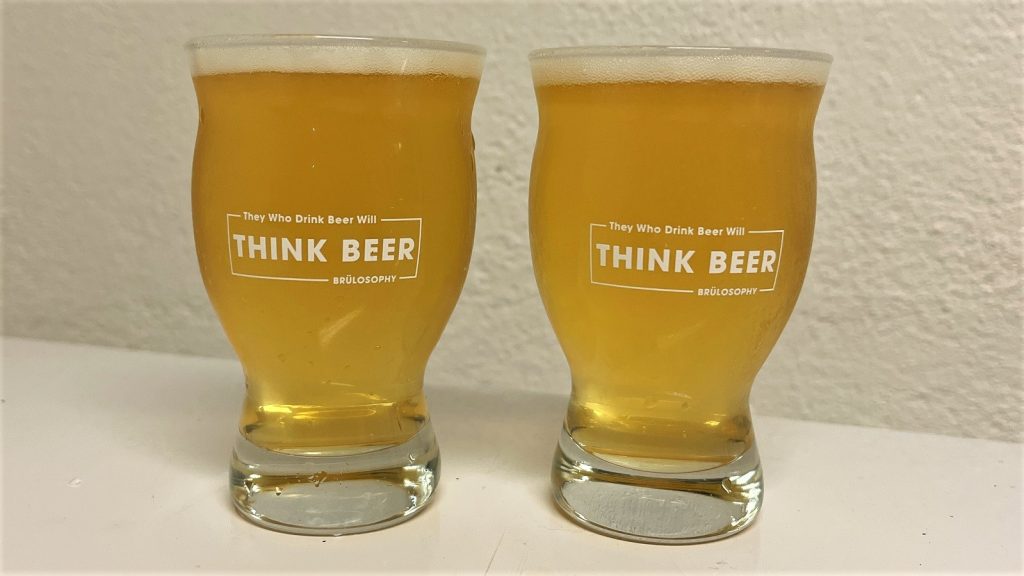
| RESULTS |
A total of 29 people of varying levels of experience participated in this xBmt. Each participant was served 1 sample of the beer that was dip hopped and 2 samples of the beer that was not dip hopped in different colored opaque cups then asked to identify the unique sample. While 15 tasters (p<0.05) would have had to accurately identify the unique sample in order to reach statistical significance, 18 did (p=0.001), indicating participants in this xBmt were able to reliably distinguish an American Pale Ale that was dip hopped with 28 grams/1 oz of Citra from one that did not receive such treatment.
The 13 participants who made the accurate selection on the triangle test were instructed to complete a brief preference survey comparing only the beers that were different. A total of 14 tasters reported preferring the dip hopped beer, 2 said they liked the beer that wasn’t dip hopped, 1 had no preference despite noticing a difference, and 1 reported perceiving no difference.
My Impressions: Out of the 5 semi-blind triangle tests I attempted, I correctly identified the odd-beer-out 4 times. I perceived the dip hopped beer as having a brighter Citra hop character while the beer that wasn’t dip hopped seemed a bit flabby and kind of boring. While my triangle test performance wasn’t perfect, it was consistent enough to indicate I perceive a real difference, and I definitely preferred the dip hopped version.
| DISCUSSION |
Various methods have been developed that are aimed at elevating hop character in beer, a newer one being dip hopping, which is said to result in less desirable grassy characteristics while accentuating fruity hop character. Indeed, tasters in this xBmt were able to reliably distinguish an American Pale Ale that was dip hopped from one that wasn’t dip hopped.
While both tasters and I perceived differences between these beers, given the fact the dip hopped batch received 28 grams/1 oz more hops than the batch that wasn’t dip hopped makes it difficult to conclude that dip hopping specifically is the reason for the differences, as the extra Citra would reasonably be expected to have a perceptible impact regardless of when it was added. Still, based on post-survey conversations and my own impressions of this beer, the dip hopped batch did seem to possess pungent fruity characteristics with no noticeable grassiness, which is what proponents of the method laud it for.
As someone with a passion for hoppy beer, I love trying out new techniques and was certainly pleased with how the character I got from the dip hopped beer in this xBmt. There’s no denying that the perceived differences may simply have been a function of the additional Citra the dip hopped batch received, and while I look forward to fleshing this out in future xBmts, based on my experience using various hopping approaches, I felt it had a positive impact and will definitely continue using this novel method.
If you have any thoughts about this xBmt, please do not hesitate to share in the comments section below!
Support Brülosophy In Style!
All designs are available in various colors and sizes on Amazon!
Follow Brülosophy on:
FACEBOOK | TWITTER | INSTAGRAM
If you enjoy this stuff and feel compelled to support Brulosophy.com, please check out the Support page for details on how you can very easily do so. Thanks!


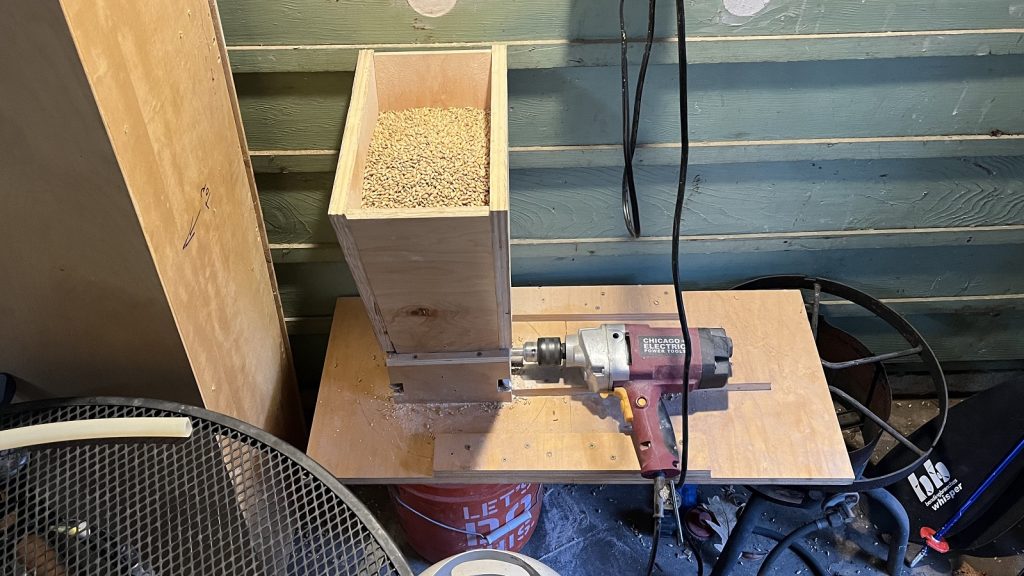
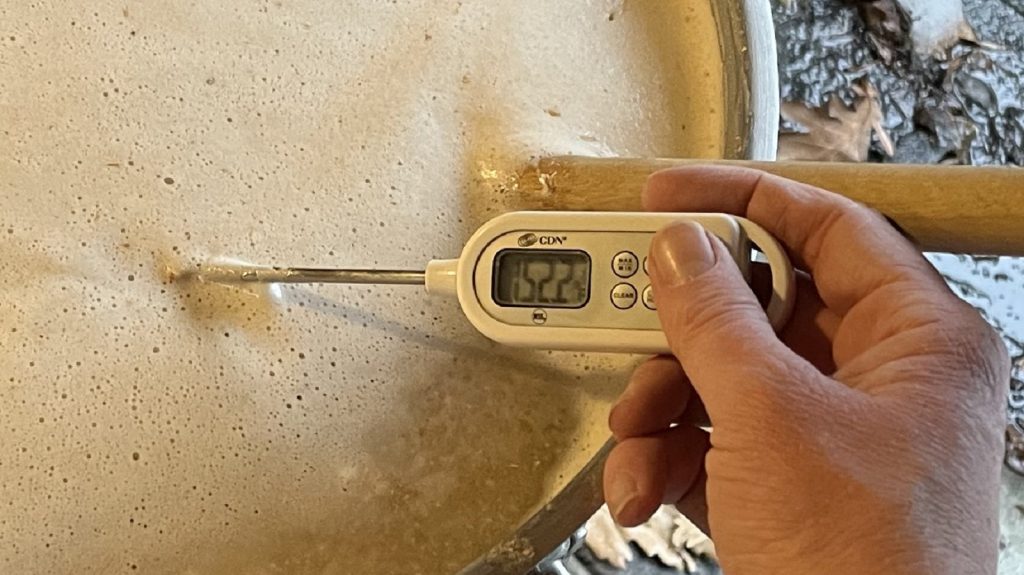
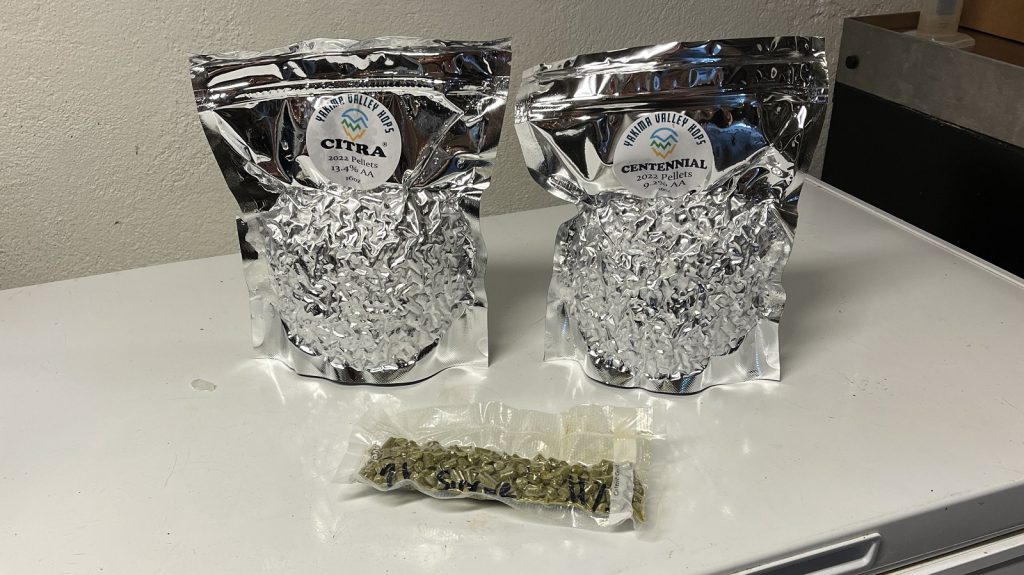
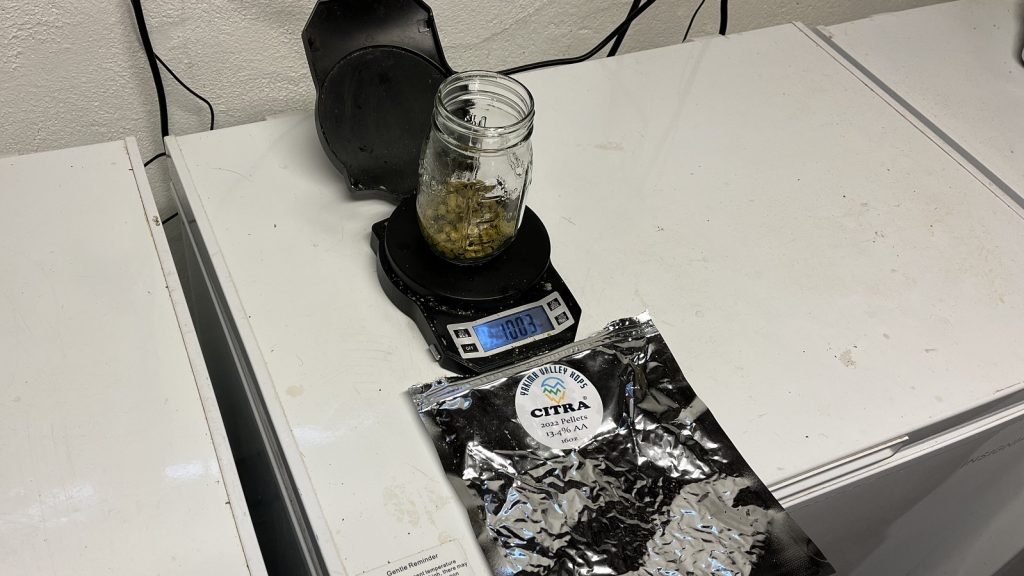
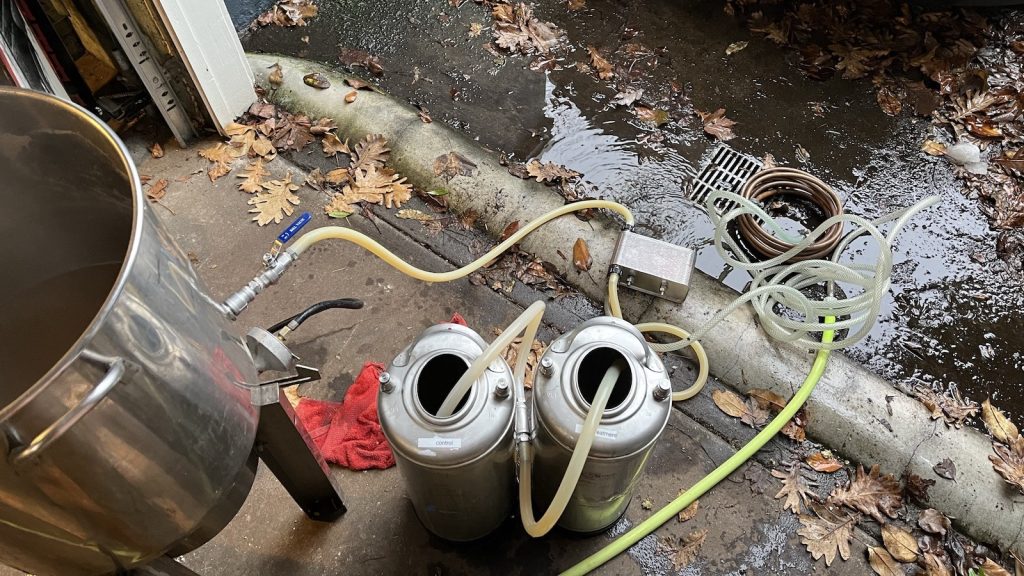
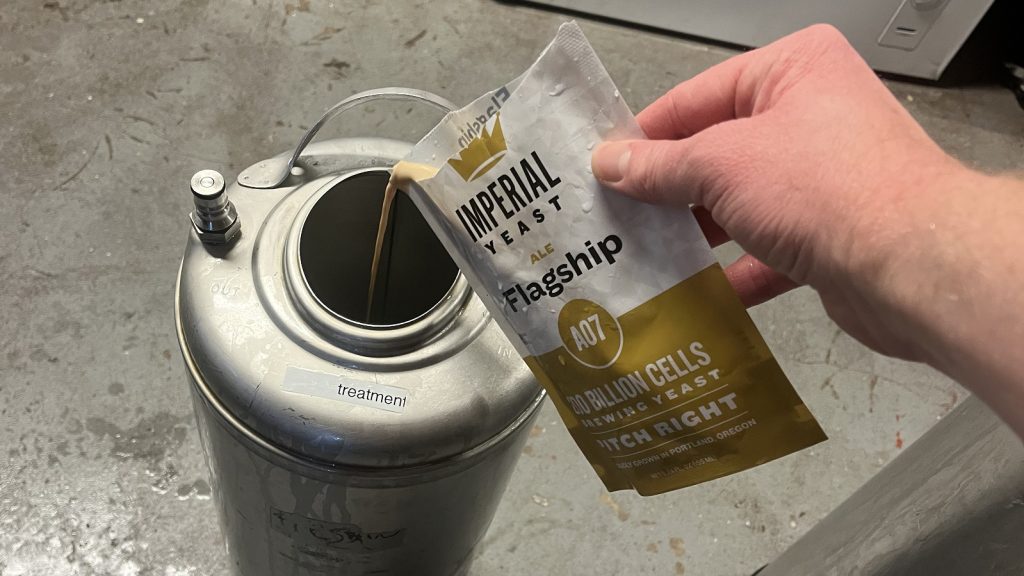











28 thoughts on “exBEERiment | Impact Dip Hopping Has On An American Pale Ale”
The recipe indicates that 14 g of citra were used for dip hopping. But in the discussion you talk about 28 g of citra for dip hopping. Which one is correct?
Good catch. Recipe has been updated to reflect that accurate amount– 28 g.
It’s a start, right? You are figuring out a new process. Now, to get the next experiment down to one variable at a time.
Jordan, love what you’re bringing to the brulosophy team so far. I’m hoping you could explain this variable/technique a little further, maybe even on the podcast. Is this just basically a highly concentrated hop stand in the fermentation vessel? Were the hops removed, and if not how did you prevent clogging your dip tubes? Could this just be done in a separate kitchen pot and filtered back through a hop spider? Thanks I’m advance!
Thanks for the kind words! I’m sure a podcast episode on the variable will come in the future. In the meantime, I’ll try to provide a little clarity. I think your ‘highly concentrated hop stand’ description is an accurate one. The hops were added loose and remained in solution for the entirety of fermentation. The fermentation kegs have cut dip tubes, and luckily the yeast/hop load was below the cut dip tube when it came time to transfer fully fermented beer to serving kegs. As far as I understand it, the hops are meant to be present during fermentation, so your kitchen pot/filter idea might be missing the mark for this approach.
This is a really cool idea! It would be interesting to see how it would compare to a batch that simply had 28g of citra added at yeast pitch (or maybe even as a “standard” dry hop?)
How is dip hopping novel? It’s just another name for whirlpool hopping. Whether done in the fermenter or kettle, it’s just whirlpool hopping. Am I missing something?
It reads like it’s a concentrated steeping of hops (an ounce in 2L as opposed to 20L) for a few minutes before that “tea” gets diluted with chilled wort. I wonder if it’s any different than whirlpooling the additional ounce in the full volume of wort (obviously proponents think it’s different, but do Brülosophy tasters)?
And we considered comparing dip hop to an equivalent WP charge as well – so many cool things for future exBEERiments!
The difference between dip hopping and whirlpool hopping is that the hop matter stays in the kettle when added in the whrilpool. The hop matter remains in contact with the beer during fermentation when dip hopped.
Yeah I know but this is too pedantic a distinction to matter on any practical level. “Dip hopping” is yet another fad process that homebrewers will cling to for a while and proclaim is amazing…cue the confirmation bias.
So should i dump my hop spider into the fermentor?
I actually came her today to see if anyone has tried dry hopping cooled water and adding after primary fermentation to avoid oxygenation or messy hop particles.
It seems there are too many variables to really be able to talk about dip hopping. You compared a different hopping method AND a different recipe at the same time. Perhaps a more appropriate title for this article would be “the difference an extra ounce of hops has on a pale ale” or “the impact of adding 66% more hops to a pale ale.”
I’m curious to learn about variations on the process that you considered. I’ve always read that dip hopping is done by adding hot water or a portion of the hot mash runnings to the fermentor. Then the steep takes place in parallel to the boil.
I’ve never heard of using mash runnings – but given that the American craft industry does not seem to agree on a standard method yet – I wouldn’t be surprised if someone has tried that. I’d be afraid to add non-boiled wort to my fermenter, personally. I knew about the hot water method, but wanted to start with hot knockout wort since I didn’t want to have to deal with wort dilution on top of trying a new hop application method. So many more fun things to try!
Redoing some of my research it seems more common to pull off a portion of wort part way through the boil, not using mash runnings. So my bad there. Your method doesn’t seem a much different than a whirlpool performed outside the kettle. Not a criticism, just an observation.
I use dip-hopping, but more as a timesaver than any kind of flavour enhancement.
My process is to reduce the boil volume by 3 litres. Then with about 30 minutes left in the boil I put 3 litres of water into my fermenter at about 60°C and add my dip-hop hops in a hop sack. They stay in there for up to 30 minutes, then I haul them out, chill my wort, and transfer that into the fermenter.
I generally only do 30 minute boils these days. This means I can get my 30 minute boil plus a 30 minute hop-stand/whirlpool/dip-hop (whatever you prefer to call it) done in 30 minutes.
it’s just Too close to a whirlpool. Temperature of wort would drop due to cool equipment. An ounce in dip versus ounce in whirlpool, now you have an experiment
Nice experiment. I’ve researched dip hopping and have been applying this method in most hoppy beers I’ve made over the last few years.
To limit oxidation, dip hopping and dry hopping in purged kegs that I transfer finished beer to, are the only post-kettle hop additions I make.
I believe that the conclusion of this experiment is that dip hopping adds to flavor and aroma vs a non-dip hopped beer. I believe you could draw the same conclusion when comparing a pale ale that was not dry hopped (post-ferm) vs one that was dry hopped (with an additional ounce of hops).
The main question that pops up in my mind: Does the dip-hopping procedure add something extra to the beer versus conventional whirlpooling or dry hopping? So just shift x ounces of hops from whirlpool/dry-hop to dip hopping. I’m wondering of dip hopping is worth the hassle?
Sources claim that dip hopping can amplify fruity and tropical notes while suppressing piney and dank hop character. I did a side by side last night, comparing my dip hopped pale ale with a Nelson/Citra/Centennial IPA and a dry hopped Nectaron pale ale – the dip hop definitely hits different (confounding variables aside – as I was comparing three unique beers/recipes). On the dip hopped beer, I was getting basically no dank or pine, compared to the pale ale and IPA (with moderate and heavy DH, respectively) where I get plenty of dank and pine. The dip hopping character strikes me as unique for sure – but maybe not as complex as I’m used to with standard DH approaches.
Very interesting! I understand that you expect a different character from dry-hopping vs dip hopping? Hypothetically you could strip terpenes that could contribute to the dank/pine character using heat (as suggested). If thats the case; then do you expect a benefit of dip hopping over whirlpool hopping?
Given my limited experience with dip hopping, I’m not prepared to definitively proclaim it as superior to whirlpooling (or dry hopping for that matter). If anything, I’d recommend using it in addition to either of those. I’d say give it a try and see if you like the character. I for one am excited to try it in a lager format that wouldn’t otherwise have a whirlpool or dry hop addition.
So from my understanding,the dip hoped beer has 28gr more citra….and the non dip hoped beer gets noting at flameout/whirpool,and no dry hop,right???
If this is true, of course the dip hoped beer has more hop aroma,flavour,and character.
They are totaly different beers.
Both beers had a flameout/WP addition – but one was also dip hopped and the other was not. Selfishly, I also wanted to be able to taste the impact of dip hopping for myself – this xbmt was a good opportunity to really assess the flavor/aroma impact. Still, more than a third of tasters couldn’t tell a difference. Although they were different to me, the difference wasn’t as stark as I would have assumed.
Speaking to a former brewer at a well-respected UK brewery, I was asking him about the recipe for one of his beers (no longer in production) that had a stunningly good hop flavour/aroma. He told me that they created a technique that he called “wet hopping” specifically for that beer. It was like dry hopping in that the hops were added to the ale in the cask, but they pre-treated the hops by infusing them in hot water for a while before adding the entire hop tea to the cask. The results were sensational but they had to discontinue the practice because for some reason they found it tended to initiate a second fermentation in the cask that caused problems in pub cellars.
I can’t see why you think this experiment demonstrated ANYTHING useful about dip hopping. You compared two beers; one had an ounce of post-boil hops added, the other had none. Of course they tasted different. It doesn’t matter how you added those hops. “More hops” tastes different to “less hops”. We knew that already.
If you want to assess the effect dip hopping has on a recipe, you need to compare it against a different method (eg whirlpool, hop stand, or even dry hop) of adding exactly the same amount of hops. You need to remove all variables other than the one you’re testing – including whether the hop material stays in the fermenter.
Maybe there’s an appreciable effect here that is worth investing time and effort in. You have completely failed to show it.
This experiment might be improved on, as others said, by using the same amount of hops in both beers, but using a portion in one for dip hopping. But I think your steep time was too short and hot. The info I’ve seen indicates that pro brewers are dip hopping for up to a full hour at 170f, rather than 5 min at something closer to boiling temps.